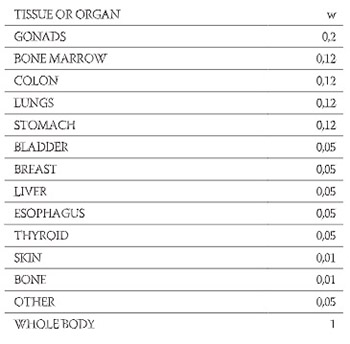Lymphoscintigraphy and Radiation – Occupational Exposure During Sentinel Node Assay
DOI:
https://doi.org/10.17305/bjbms.2006.3118Keywords:
Lymphoscintigraphy, sentinel node, radiation exposureAbstract
Ionizing radiation has many practical applications, but it is also, as it is well known, dangerous to human health. The purpose of this study was to estimate the dose and exposure for medical staff involved in sentinel node assay and to determine how safe this assay really is. The theoretical method was used for calculation. Three groups of medical staff were selected: nuclear medicine specialist, nuclear medicine technologist and a surgeon. The results obtained show that the most exposed staff member is nuclear medicine specialist and that dose received by the surgeon is smaller then the dose limit.
Citations
Downloads

Downloads
Published
How to Cite
Accepted 2018-02-01
Published 2006-11-20









